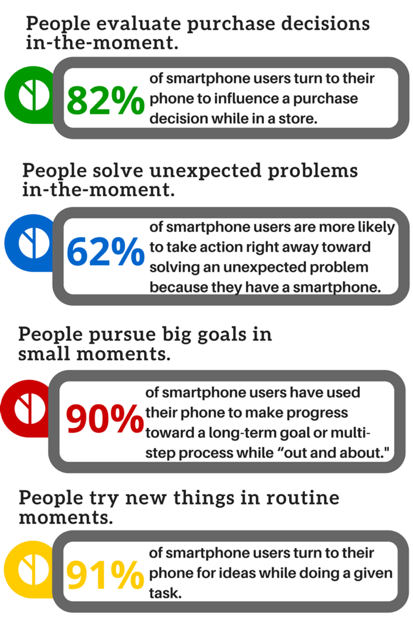
The Zero Moment of Truth (ZMOT) was originally introduced by Google in 2011. The ZMOT states that the “zero moment” precedes the first moment of truth and is what consumers are searching for and in turn, what they find after encountering a stimulus. This idea built and reinvented the idea of the previous First, Second & Third MOT concepts introduced by P&G in 2005. Google asserted that the true customer moment of truth in the burgeoning digital age was now the inspiration that was tied back to consumer search-engine queries.
Google’s revised version of the original customer moment of truth path looked like this: This initial learning phase is what ultimately triggers the initial thought or purchase process. Google argues that every single search of information can be tied back to this initial process. The Ultimate Moment of Truth (UMOT) was introduced by digital analyst and Anthropologist Brian Solis in his 2013 book What’s the Future of Business? Solis brought to light the idea of shared experiences and their impact in the consumer buying cycle. Customer buying cycles were no longer linear, but rather cyclical and much more complex because of emerging technologies and peer-to-peer networks.
Micro-moments are the moments inside of the moments that have shifted the landscape of how we perceive brands and our decision-making processes. Mobile and the rise of “ephemeral content” like SnapChat. Big data, mobile innovations and wearable tech have shifted consumer’s buying expectations for immediacy, relevance, and loyalty to the brands that best serve those needs. While tech and mobile innovations have given consumers the power, these same innovations are what enable brands to better service these evolving consumer needs and expectations.
Auto239